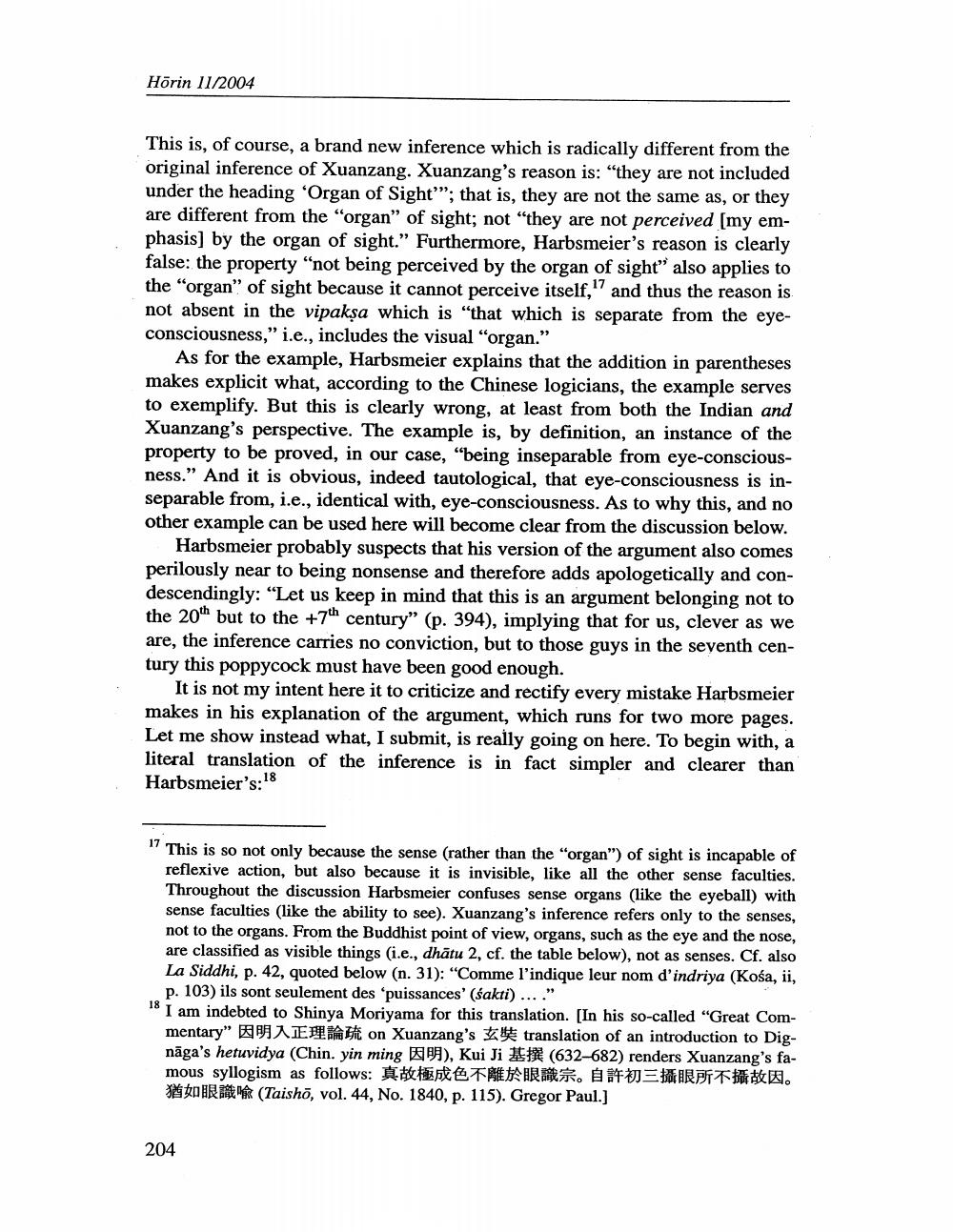________________
Hörin 11/2004
This is, of course, a brand new inference which is radically different from the original inference of Xuanzang. Xuanzang's reason is: "they are not included under the heading 'Organ of Sight""; that is, they are not the same as, or they are different from the "organ" of sight; not "they are not perceived [my emphasis] by the organ of sight." Furthermore, Harbsmeier's reason is clearly false: the property "not being perceived by the organ of sight" also applies to the "organ" of sight because it cannot perceive itself," and thus the reason is not absent in the vipaksa which is "that which is separate from the eyeconsciousness," i.e., includes the visual "organ."
As for the example, Harbsmeier explains that the addition in parentheses makes explicit what, according to the Chinese logicians, the example serves to exemplify. But this is clearly wrong, at least from both the Indian and Xuanzang's perspective. The example is, by definition, an instance of the property to be proved, in our case, "being inseparable from eye-consciousness." And it is obvious, indeed tautological, that eye-consciousness is inseparable from, i.e., identical with, eye-consciousness. As to why this, and no other example can be used here will become clear from the discussion below.
Harbsmeier probably suspects that his version of the argument also comes perilously near to being nonsense and therefore adds apologetically and condescendingly: "Let us keep in mind that this is an argument belonging not to the 20th but to the +7th century" (p. 394), implying that for us, clever as we are, the inference carries no conviction, but to those guys in the seventh century this poppycock must have been good enough.
It is not my intent here it to criticize and rectify every mistake Harbsmeier makes in his explanation of the argument, which runs for two more pages. Let me show instead what, I submit, is really going on here. To begin with, a literal translation of the inference is in fact simpler and clearer than Harbsmeier's: 18
17
This is so not only because the sense (rather than the "organ") of sight is incapable of reflexive action, but also because it is invisible, like all the other sense faculties. Throughout the discussion Harbsmeier confuses sense organs (like the eyeball) with sense faculties (like the ability to see). Xuanzang's inference refers only to the senses, not to the organs. From the Buddhist point of view, organs, such as the eye and the nose, are classified as visible things (i.e., dhātu 2, cf. the table below), not as senses. Cf. also La Siddhi, p. 42, quoted below (n. 31): "Comme l'indique leur nom d'indriya (Kośa, ii, p. 103) ils sont seulement des 'puissances' (śakti)...."
18
I am indebted to Shinya Moriyama for this translation. [In his so-called "Great Commentary" E on Xuanzang's translation of an introduction to Dignaga's hetuvidya (Chin. yin ming ), Kui Ji (632-682) renders Xuanzang's famous syllogism as follows: 真故極成色不離於眼識宗。自許初三攝眼所不攝故因。 (Taisho, vol. 44, No. 1840, p. 115). Gregor Paul.]
204




